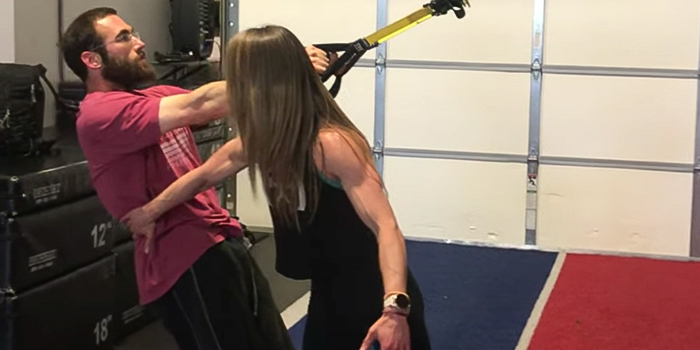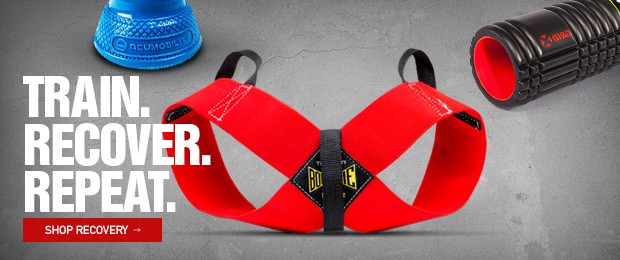
“My shoulders hurt at the bottom of the bench.”
I get this question multiple times per week with both my in-person and remote clients. And in general, most people with this issue display similar tendencies:
- Significant anterior muscle development
- Significant lat tone and utilization, rolling the shoulders inwards
- Perceived “kyphosis” or “rounded” thoracic spine that is MORE a reflection of lat and trap tonicity and development altering shoulder girdle position, falsely identified as spinal rounding
- Poor functional external rotation strength and mid/upper back integration
I follow with a series of questions to engage in dialogue, with one of the questions being, “What are you doing to fix it?”
And so often, the response I get is one of two things:
- More rowing (good in theory)
- My coach prescribed me these rehab exercises: Incline bench angels, face pulls, standing external rotations with a band or cable.
And in theory, those are “okay” options, but as with everything, execution is critical. The mistake most athletes make is going through the motion without the intent of movement, while simultaneously unknowingly continuing to train the strong patterns.
Last week I had a call with a lifter and coach who is absolutely brilliant and an exceptionally strong presser. As soon as he mentioned the incline bench (or even flat bench!) angels or external rotation presses, I asked him, “How often do you feel those in any place but your upper trap and anterior delt?”
His response? Rarely.
There’s a concept in business called the Peter Principle. Its basic idea is that a person will promote or rise to his or her level of competence within an organization. Beyond that threshold, that person either requires coaching to achieve a higher degree of competence/skill, or someone more competent may come in to complete the task. Our neuromuscular system operates very similarly, especially in strength athletes. They are so preferenced and strong into specific patterns that if they're not careful, they'll work to accomplish a task that maybe should be given to someone else, even if that requires some “coaching up.”
This is the single biggest issue I see with people who are finding exercises either prescribed by a coach (who are well-meaning but maybe don’t quite know what questions to ask), or by finding exercises willy nilly off social media. I love the exercises the person on this call was doing, but they're not for him at this point, because of the Peter Principle.
So what’s the deal? If someone is completing a movement that “should” recruit certain muscles (like the lifter above), why aren’t they?
Stability and tone will always precede movement. And with this particularly (again) strong presser, who’s “baseline” stability and preference is anterior delt and trap, recruits these preferenced muscles to stabilize the area. The task required his strong players to come to the game first.
One of my favorite tools to combat this patterning is suspension training, either via TRX or bodyweight on a bar. While it may seem low-level for guys who are pressing 500+, actually executing it correctly is very challenging, especially when we start to talk about overall integration patterning. I’ve filmed a video and given a bit of a quick snippet on how to execute:
The same rule applies to the guys who combat their shoulder pain with “more rowing.” It’s a good idea in theory but the execution of the patterns is the bigger determinant of what training adaptation they’re actually going to accrue. If they are not intentional, it’s going to be the same pattern that got them into issues, to begin with. This is something my husband has had to work through, and improved upon dramatically. He’s also had significantly less pec and shoulder pain that had been nagging him for years since dropping the “be a hero” with heavy weight mentality and focusing on the hardest thing he can do well.
Here’s a video of him doing one of his favorite brutal exercises, Rack Chins, with what I would consider significantly improved patterning. You’ll notice that he’s able to keep shoulders “open” while also keeping ribcage controlled and sternum “up"…basically what we want when we’re pressing. So the double win here is not only decreased pain, but there should be some carryover to pressing position. Not bad, for a “PT” exercise.
You’ll see he gets a FULL stretch at the bottom (partially for hypertrophy/tension purposes), but experiencing BOTH ends of a range of motion give your brain some really awesome mapping and learning abilities. The one thing I may change on his execution is the joint traction at the bottom of the range. I’d prefer he kept a little more tension/control there, rather than hanging on the shoulder joint itself. I want to point out that Dave has one of the strongest backs I’ve ever seen and can routinely pull 800 both conventional and sumo, and even deep into bodybuilding prep, can maintain perfect upper back position with paused RDLs in the mid 500’s range. Yet, these are HARD for him, if he’s conscious about the execution. You aren’t too strong for either of these motions if you execute them with intent.
This is a concept we coach our lifters on frequently, and one I introduce to a lot of the gym members where I rent space. Give it a try, and as always, email me with questions at Dani@MergePerformancePT.com, or my husband Dave at David@MergePerformancePT.com for ways that he’s modified his own training/execution for improved technique.











4 Comments